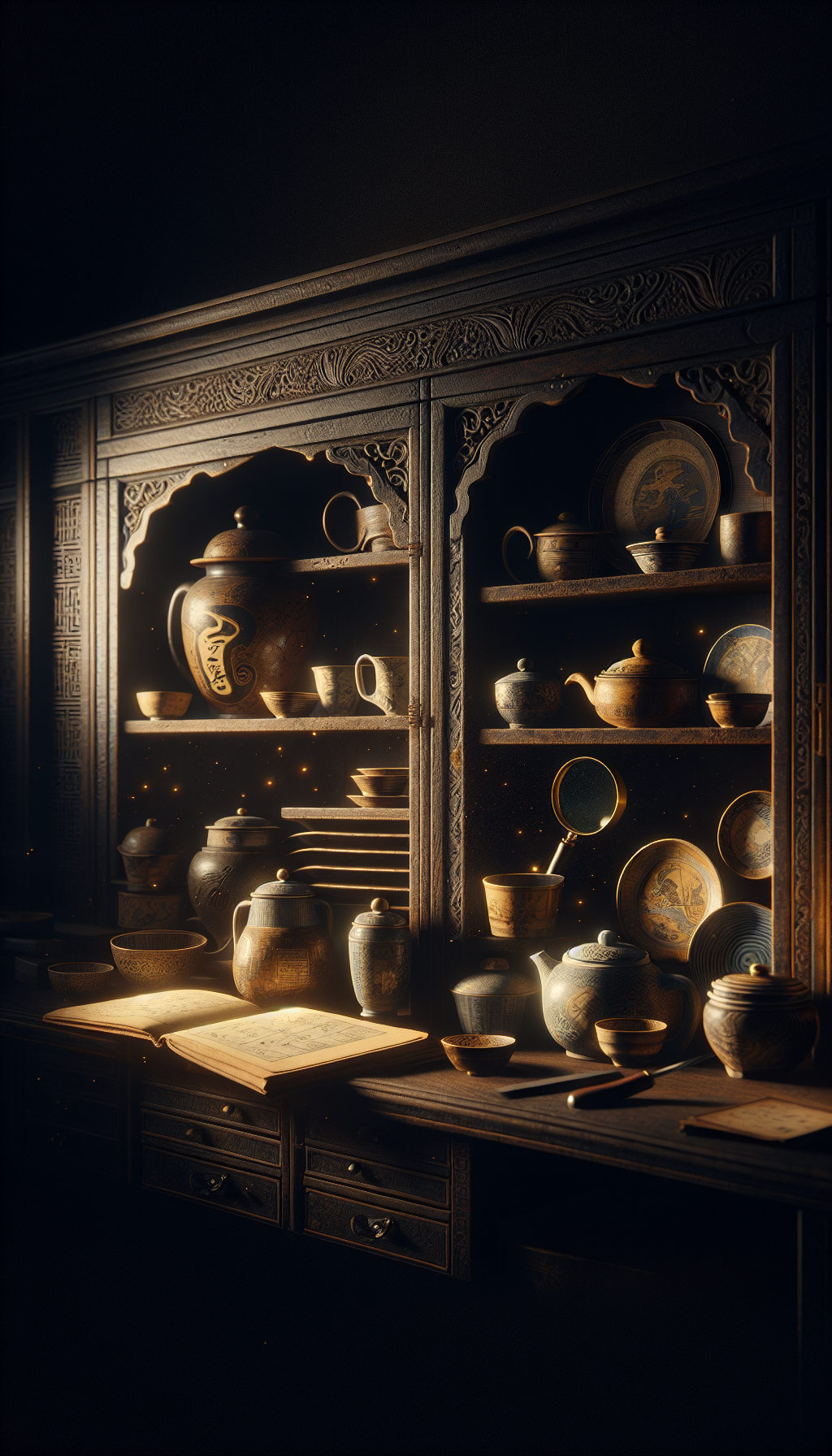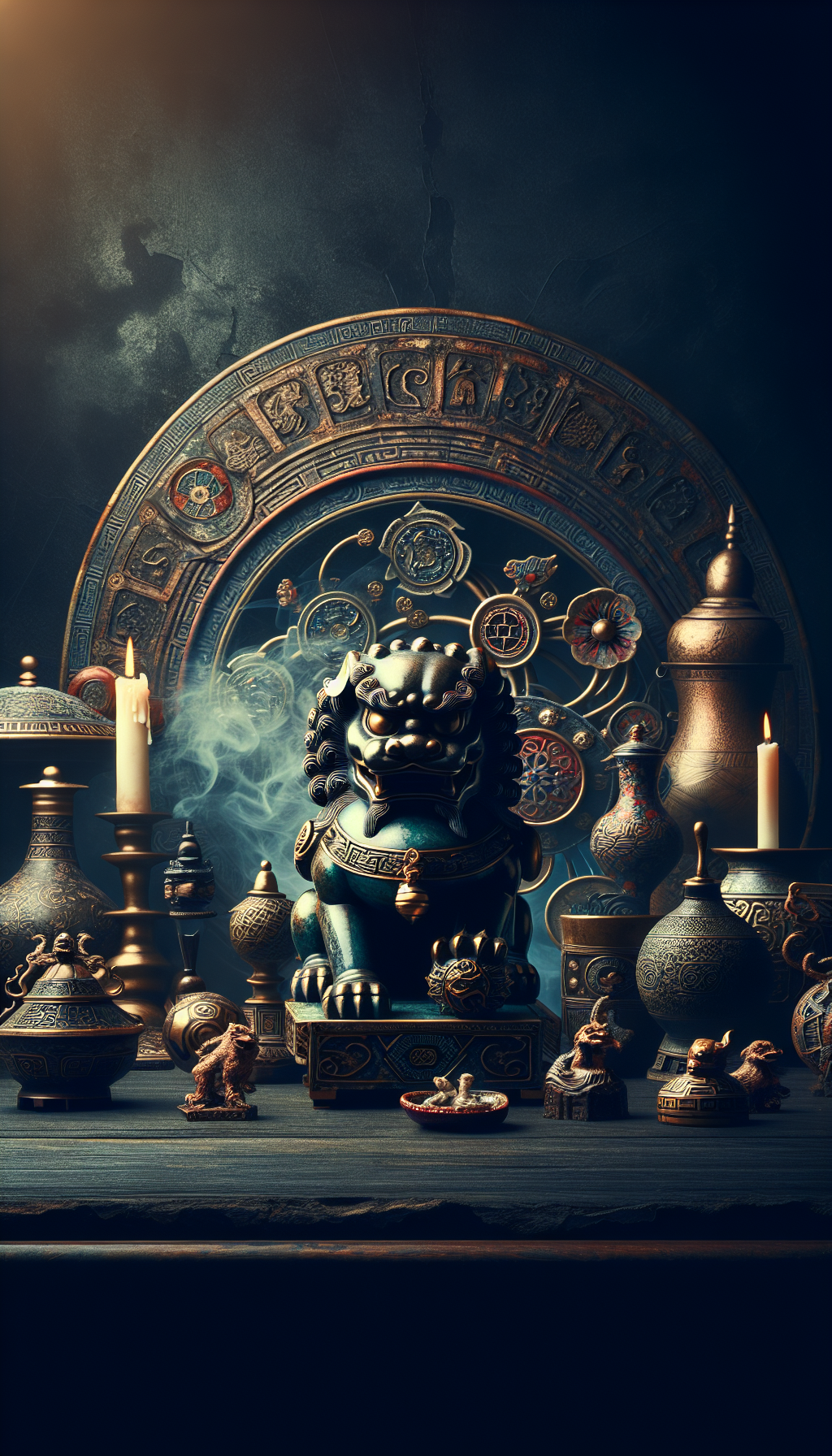An Imperial Jade Rooster Figurine From Circa Early 20th Century
Collectors encounter “imperial jade” roosters with some frequency, but pinning down what that phrase means—and whether a carving is truly early 20th century—takes careful observation and testing. This guide walks you through material identification, dating clues, iconography, condition analysis, and market context so you can assess a jade rooster figurine with confidence.
What “Imperial Jade” Really Means
Two overlapping ideas often get conflated:
- Imperial green: In the trade, “imperial jade” commonly refers to top-quality, vivid, evenly distributed, medium-to-strong emerald green jadeite with fine texture and high translucency. This is a color-grade, not a guarantee of provenance.
- Imperial provenance: Objects commissioned by or made for the Qing court (and its workshops) may be called “imperial” in the historical sense. Authentic court provenance requires strong documentation, inscriptions, or stylistic and technical consistency with known palace workshop output.
Key takeaways:
- Most early 20th-century rooster figurines marketed as “imperial jade” are jadeite carvings in an imperial-green tone, not necessarily court commissions.
- Genuine palace workshop carvings are more likely from the 18th–19th centuries (Qianlong-Jiaqing) for nephrite; true court-commissioned jadeite carvings from the very late Qing exist but are rarer and demand rigorous provenance.
For appraisal purposes, clarify whether “imperial” is used as a color descriptor or a provenance claim. Price expectations differ dramatically.
Dating to the Early 20th Century: Stylistic and Technical Clues
The early 20th century straddles late Qing (Guangxu 1875–1908, Xuantong 1908–1912) and the Republic era (1912–1949). During this period:
- Jadeite supply: Imports from Burma (Myanmar) increased, and jadeite overtook nephrite for many decorative carvings, especially in southern trade hubs like Guangzhou and later Shanghai and Hong Kong.
- Workshop ecology: Court-trained artisans dispersed amid political change, bringing high-level techniques into private studios. Quality varies widely, from refined palace-influenced work to tourist-grade pieces.
Dating indicators to evaluate:
- Subject and pose: Roosters perched on rockery, with crisply stratified plumage and undercut combs/wattles, are standard. Republic-era versions often favor lively, naturalistic stances over rigid, archaic forms.
- Toolwork and finish: Early 20th-century jadeite carvings typically show precision rotary-tool drilling in crevices, fine undercutting between feathers, and a high, even gloss. Look for disciplined symmetry without looking machined; overly uniform, shallow detailing can suggest later mass production.
- Polishing: A high, liquid-like polish with subtle “orange-peel” micro-texture over convex areas is consistent with hand finishing. Completely glass-slick surfaces with filled pits can indicate polymer impregnation (a treatment, not a dating tool per se).
- Stands: Original hardwood stands (hongmu or zitan-like woods) from this period often feature dense, refined openwork with softly patinated edges. Republic stands can be slightly lighter, with tighter scrollwork than mid- to late-20th-century replacements. Mismatched, new, or lacquered stands complicate dating but are common; evaluate them separately from the carving.
- Inscriptions and labels: Commercial shop labels from Beijing, Tianjin, or Shanghai curio dealers show up on stands. Incised reign marks on jadeite figurines are uncommon; if present, scrutinize style and wear. Paper export labels from the mid-20th century push the terminus post quem accordingly.
- Surface wear: Legitimate old handling wear concentrates on high points: comb tips, beak edges, and feather ridges. Expect minute, rounded micro-nicks rather than sharp fresh chips.
No single clue dates a carving. Aim for a coherent cluster: jadeite material, high hand finish, period-appropriate stand, natural wear, and plausible provenance support an early 20th-century attribution.
Material Analysis: Jadeite vs Nephrite, Treatments, and Tests
Jade is a group name; carvings are typically either jadeite (pyroxene mineral) or nephrite (amphibole). Rooster figurines of the early 20th century are most often jadeite due to the desirable green palette.
At-the-bench observations:
- Texture: Fine-grained jadeite shows a tight, sugary microstructure under magnification, with bright, slightly granular reflections. Nephrite appears silky to fibrous, with a more felt-like luster.
- Translucency: Hold the rooster against a strong light. Quality jadeite shows even, luminous translucency (“water”) through thinner areas like comb and tail feathers. Cloudiness or patchy opacity can lower grade.
- Color: Imperial green jadeite exhibits a saturated, slightly bluish to pure emerald hue with minimal grayness and even distribution. Watch for concentrated color along fissures or grain boundaries—often a dye signature.
Instrumental tests (non-destructive preferred):
- Specific gravity and refractive index: Jadeite’s SG is typically higher than nephrite’s; RI testing via spot method can support identification. Use a trained gemologist; results on aggregates require expertise.
- Raman/FTIR spectroscopy: Distinguishes jadeite from nephrite reliably and detects polymer impregnation (tell-tale organic peaks). This is the gold standard for material and treatment confirmation.
- UV response: Untreated jadeite is usually inert. Polymer-impregnated jadeite (“B-jade”) can show a patchy bluish-white fluorescence; dyed jade (“C-jade”) may fluoresce in the fissures or show unusual absorption under visible light.
Treatment categories to know:
- A-jade: Natural, untreated. Most collectible and stable. Commands premiums.
- B-jade: Bleached and polymer-impregnated to improve clarity. Lower value; long-term stability concerns.
- C-jade: Dyed to enhance color, often a bright, unnatural green. Lowest value.
- B+C jade: Both bleached/impregnated and dyed. Avoid for investment.
Because treatment materially affects value, a lab memo is often justified for higher-value roosters, especially those claimed to be “imperial green.”
Iconography and Carving Quality of the Rooster
Symbolism enriches both connoisseurship and marketability:
- Auspiciousness: “Rooster” (jī 雞) is a homophone for “auspicious” (jí 吉). A rooster crowing at dawn heralds light over darkness—success and vigilance.
- Rank and merit: Depictions with peonies (wealth) or rockery (stability) compound wishes for prosperity and status. With coxcomb emphasized, the rooster can allude to scholarly or official advancement.
- Five virtues: Classical texts ascribe civility (comb), martial valor (spurs), bravery, benevolence, and trustworthiness to the rooster—a theme sometimes reflected in formal, upright poses.
Assessing carving quality:
- Proportions: A convincing rooster balances head, chest, and tail with dynamic countercurves. Clumsy, blocky profiles with stubby tails signal lower craftsmanship.
- Feathers: High-quality work articulates layered feather groups with crisp terminations and clean undercutting, especially near the tail and wing covert areas.
- Negative space: Look for carefully pierced zones between legs and plumage, executed without tool chatter or widened drill entrances.
- Surface integrity: The carver should follow the rough’s strengths, minimizing stress lines. Clever integration of natural color variations—mottled green, white, and occasional russet “skin”—is a hallmark of masterful planning.
- Base: A well-integrated base or rockery supports balance and complements the composition; sloppy, cylindrical drilling underneath can indicate mass-produced stock.
Quality jadeite may display natural inclusions (“cotton” clouds, mineral grains). These do not automatically detract if they are few, well-placed, and outweighed by superior color and artistry.
Condition, Care, and Ethical Considerations
Condition issues common to jade roosters:
- High-point losses: Beak, comb, wattle, and tail tips are vulnerable. Old chips are rounded and patinated; fresh ones are bright and sharp.
- Micro-cracks and bruises: Impact can create “starlike” bruises beneath the surface. Strong raking light and 10–20x magnification help locate them.
- Repairs: Reattached pieces and filled losses occur, especially at thin combs or spurs. Under UV, many adhesives fluoresce; under magnification, look for glue lines and filled bubbles.
- Stands: Damaged or replaced stands affect presentation and, to a lesser degree, value. Original, well-fitted stands enhance desirability.
Care best practices:
- Cleaning: Light dusting and a soft, slightly damp cloth. Avoid chemical cleaners, ultrasonics, steam, and prolonged soaking—especially on any treated jade.
- Storage: Padded, compartmentalized storage away from hard objects; avoid extreme heat and sudden temperature changes.
- Display: Stable, non-slip base; avoid direct sunlight (potential dye fading) and ozone/UV exposure, which can accelerate polymer deterioration.
Ethical and legal notes:
- Provenance: Maintain a clear paper trail. Items with documented pre-1970 export or family provenance are easier to trade internationally.
- Cultural property: Know local regulations governing export/import of Chinese antiquities; while early 20th-century items generally face fewer restrictions, documentation helps.
Appraisal Logic and Market Positioning
Valuation rests on four pillars: material, workmanship, condition, and provenance.
Material
- Color: Even, saturated imperial green commands the highest prices. Secondary zones of white (“icy”) or pale green can be attractive if well composed.
- Translucency and texture: Fine-grained, high-translucency jadeite (A-jade) is preferred.
- Size and weight: Larger carvings with consistent quality escalate value, but size without color and craft does not.
Workmanship
- Crisp modeling, refined undercutting, and an intelligent use of the rough drive desirability.
- Artistic presence counts: a lively, characterful rooster with poise will outperform a larger but lifeless carving.
Condition
- A pristine jade rooster with only minute age-consistent wear rates higher than one with reattached elements or significant chips.
- Treated material, even in good condition, ranks lower than untreated.
Provenance
- Named collections, early import records, or period dealership receipts (e.g., Shanghai or Tianjin curio shops) support dating and often increase estimates.
- “Imperial workshop” claims require robust evidence. Without it, price on merit.
Market tiers (broad, indicative categories)
- Decorative/entry level: Mixed color, modest translucency, average carving; later stands; possible treatments. Typically accessible pricing.
- Collector grade: Good green hues, even translucency, crisp carving, minimal issues, likely A-jade. Strong mid-market.
- Premium: Vivid imperial green, homogeneous color, excellent translucency, masterful carving, original stand, A-jade with lab memo, and convincing early 20th-century attribution. Commanding prices, potentially competitive at auction.
Insurance vs sale:
- Insurance values reflect replacement cost in retail settings and may exceed auction hammer expectations. Auction estimates should align with recent comparables in material, size, and quality.
Practical Checklist
- Clarify “imperial”: Is it color-grade or claimed provenance?
- Identify material: Obtain jadeite vs nephrite confirmation; consider lab testing.
- Screen for treatments: Look for dye concentrations, polymer fluorescence, and FTIR evidence.
- Examine workmanship: Proportions, feather detailing, undercutting, and base integration.
- Assess condition: High-point wear, chips, repairs, and stand originality.
- Corroborate date: Style, tool marks, stand type, labels/receipts consistent with early 20th century.
- Compile provenance: Prior ownership, import records, dealer invoices, and any exhibition history.
- Position in market: Map to a tier; factor size, color, translucency, and artistry.
- Document thoroughly: Measurements, weight, photos (all angles, under magnification), and any lab memos.
Short FAQ
Q: How can I tell if my rooster is jadeite or nephrite? A: Visual clues help—jadeite tends to be more granular and often brighter green, while nephrite looks silky and is more often white to celadon. However, a gemological test (Raman/FTIR, RI/SG) is the reliable method.
Q: Does an original hardwood stand add value? A: Yes. A well-fitted, period hardwood stand enhances presentation and signals quality. It can modestly increase value, especially if the patina and workmanship align with the carving’s date.
Q: Is bright, neon green always a red flag? A: Not always, but be cautious. Unnaturally uniform, neon-green hues with color concentrated in fissures often indicate dye. Top imperial-green jadeite is vivid yet natural-looking, with depth and evenness.
Q: Should I clean a dirty jade rooster with soap or ultrasonics? A: No ultrasonics or harsh chemicals. Use a soft brush or cloth with clean water only. If you suspect treatments or repairs, keep it dry and consult a conservator or gemologist.
Q: Do reign marks prove imperial provenance? A: Rarely on jadeite figurines. If present, reign marks must be stylistically and technically correct and supported by other evidence. Most value comes from material quality and artistry rather than spurious marks.
With a disciplined approach—separating color-grade from provenance, confirming material and treatments, and weighing craftsmanship and condition—you can place an early 20th-century jade rooster figurine accurately within the market and your collection.




